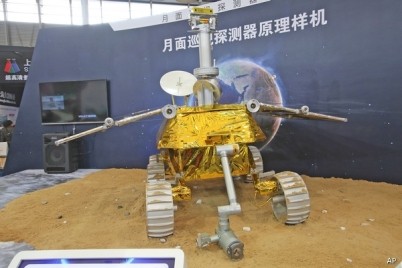Preliminary findings from China's first lunar rover, Yutu, show the moon's complex geological history, scientists said on March 12, Thursday, according to a report by Xinhua.
The report said that radar measurements taken by Jade Rabbit, Yutu's other name, beneath its landing showed at least nine subsurface layers, which means that several geologic events in the past have occurred there.
Xinhua reported that Yutu's findings were published in the U.S. journal "Science."
Lead author Xiao Long, professor at the China University of Geosciences in Wuhan, said that it was the first time that multiple subsurface layers were detected on the moon, which he said may be attributed to ancient lava flows and the erosion and weathering of rocks into regolith, or layers of loose dust.
The layers may have been formed in the past 3.3 billion years, the professor added.
Xiao, also a professor at Macau University of Science and Technology, said that one of the most interesting discoveries is a layer found 140 to 240 meters deep.
"We think this layer is probably pyroclastic rocks which formed during the course of volcanic eruptions," Xiao told Xinhua. "It reveals the diversity of volcanic activity, but what's more important is that it shows there are plenty of volatile contents inside the moon."
Yutu landed on the moon surface on Dec. 14, 2013. Together with the stationary lander, it was brought to the moon by China's Chang'e 3 mission. Chang'e's landing is the first moon landing since Russia's Luna 24 mission in 1976.
It touched down on the northern Mare Imbrium, also called Sea of Rains, a region not directly sampled before and far from the U.S. Apollo and Luna landing sites.
Yutu traveled a total of 114 meters following a zigzagging route, then came to a halt about 20 meters to the southwest of the landing site due to mechanical problems.
Using two radar antennas that can penetrate the moon's crust to about 400 meters deep, the rover took samples of a small area, which researchers say is geographically distinct from previous landing sites.
"Overall, we have already had a general scientific understanding of the moon thanks to these lunar missions. But if we want to have a comprehensive understanding of moon's geological structure, material composition and formation, as well as its evolution, a large number of exploration events are still needed. Meanwhile, effective international cooperation is a must considering the high cost of these activities," Xiao stressed.



























